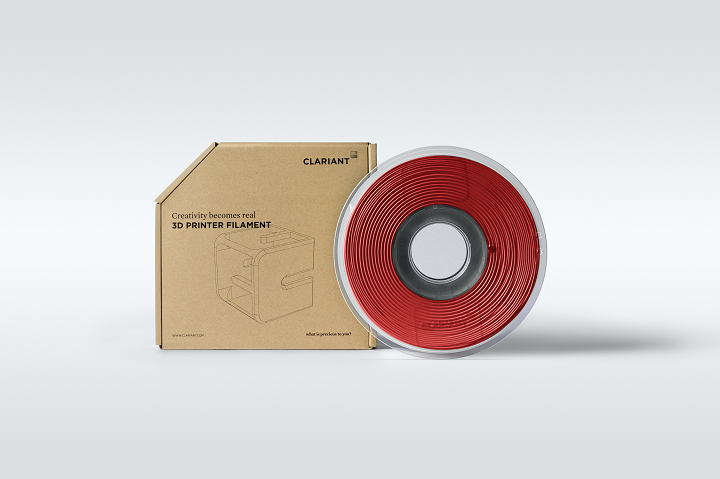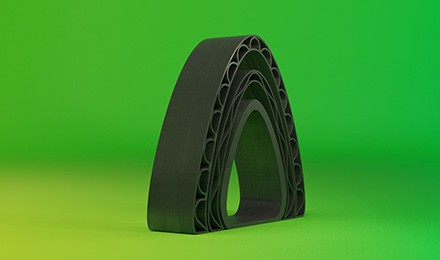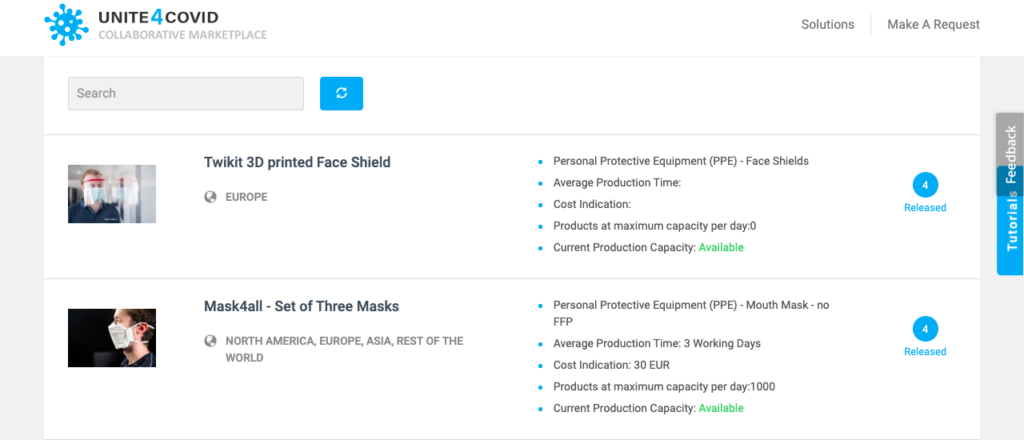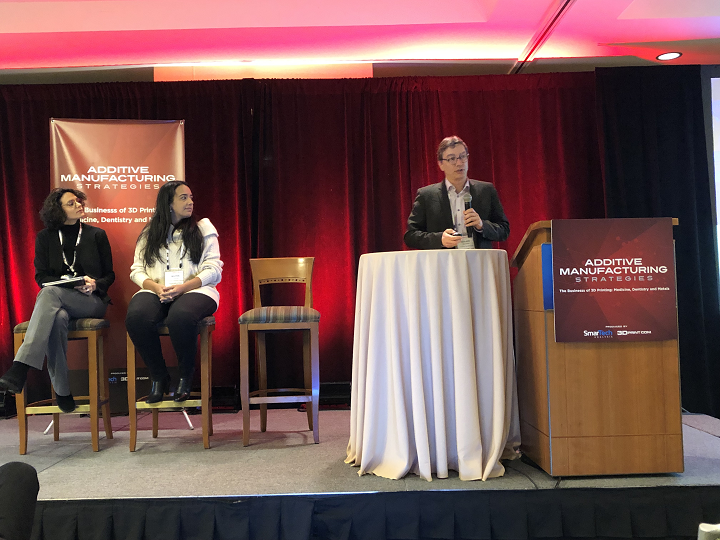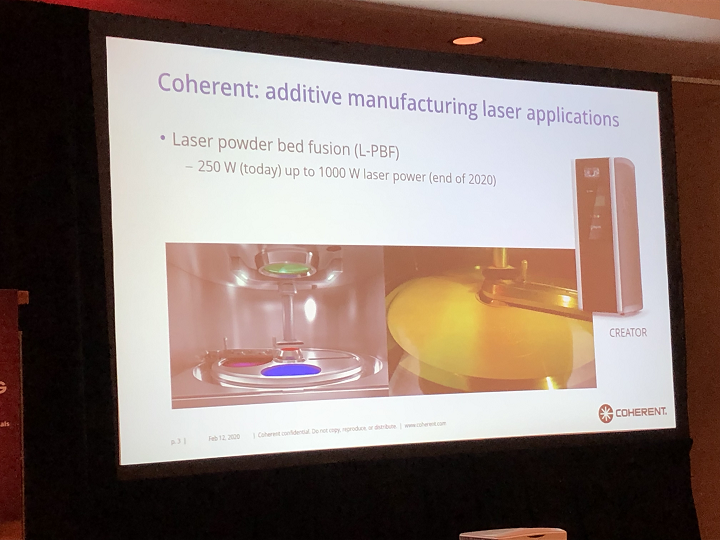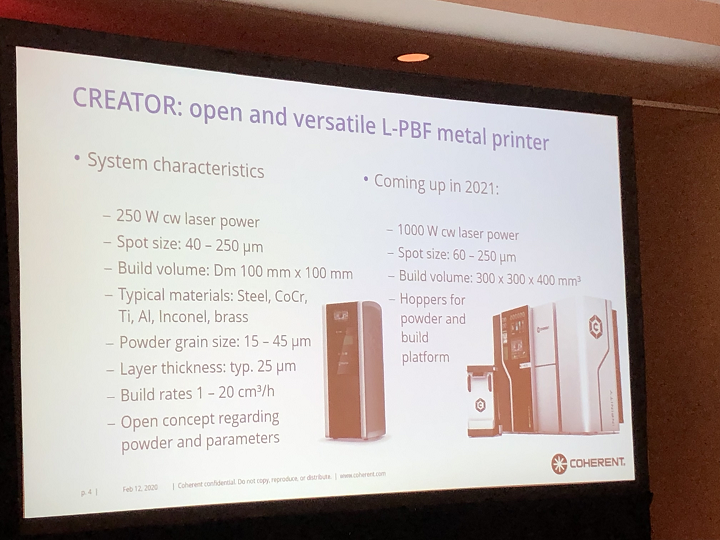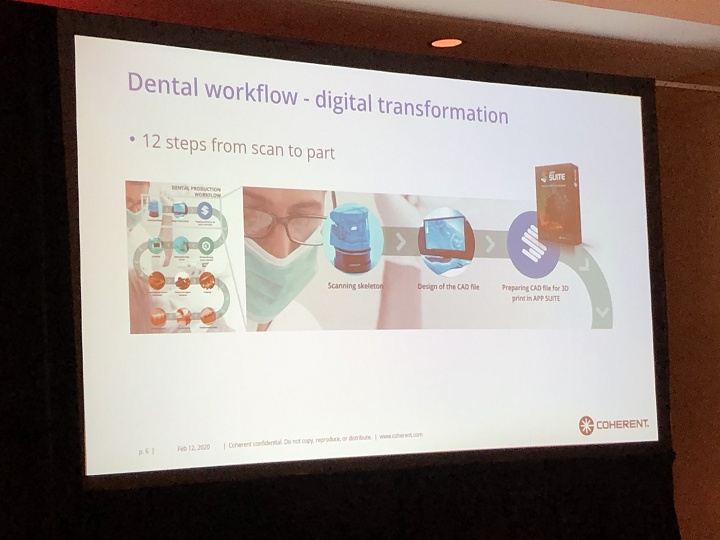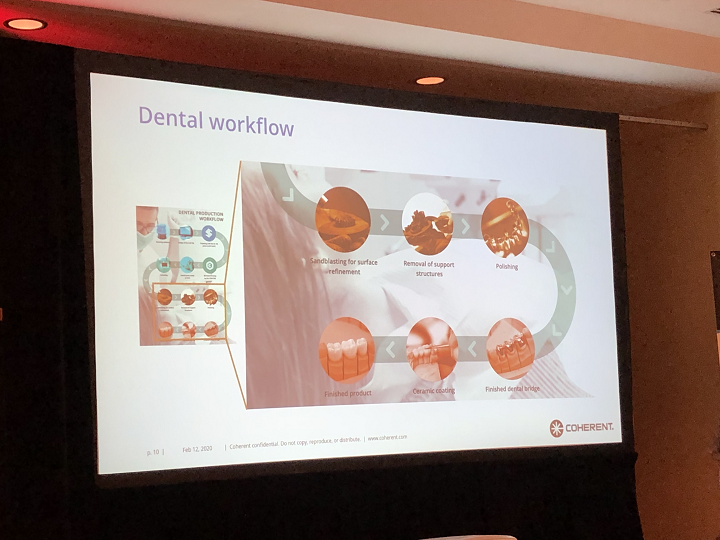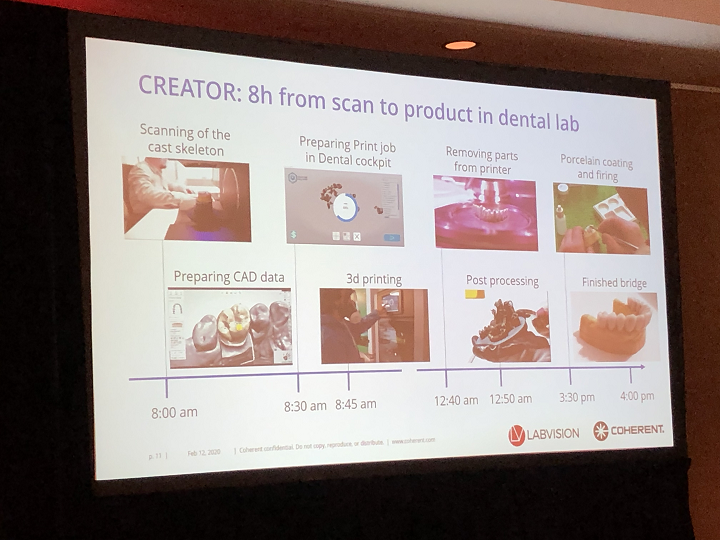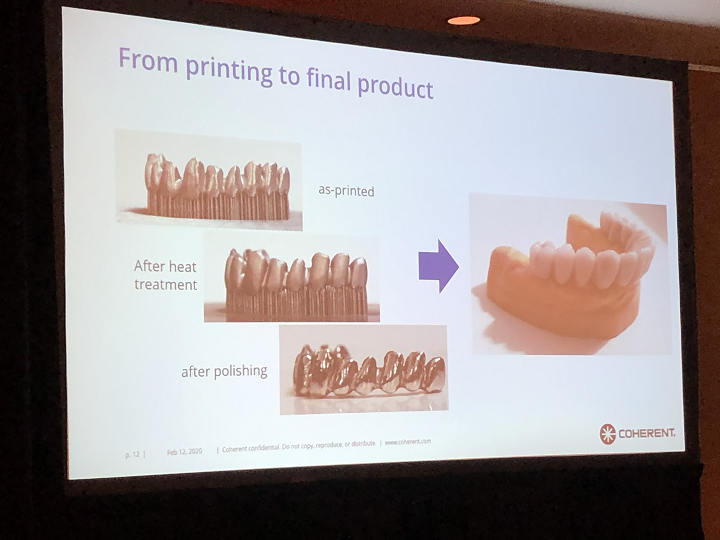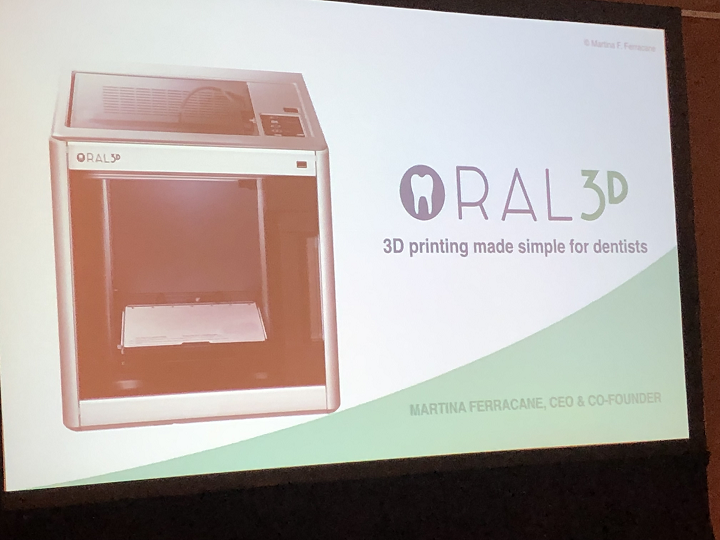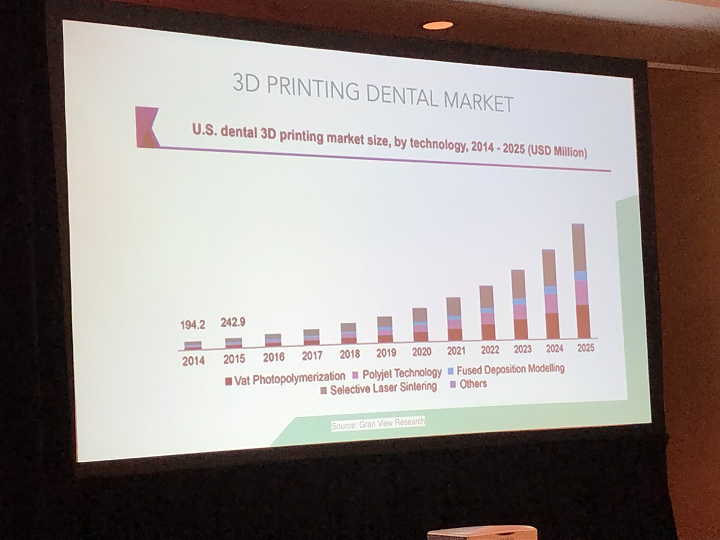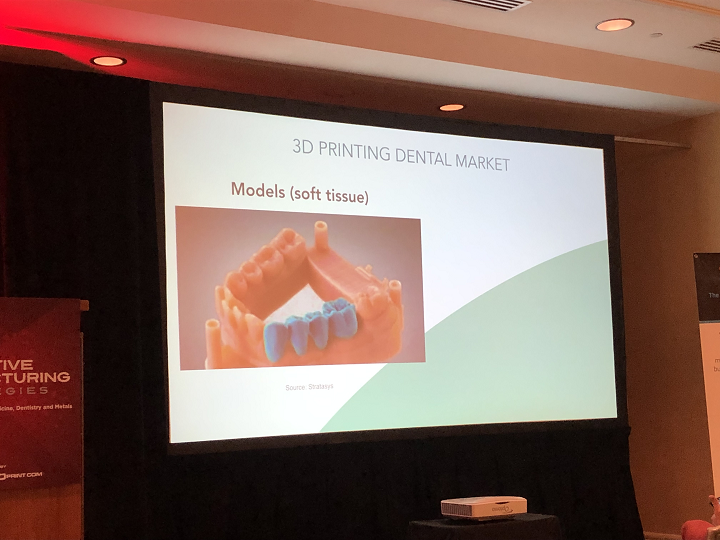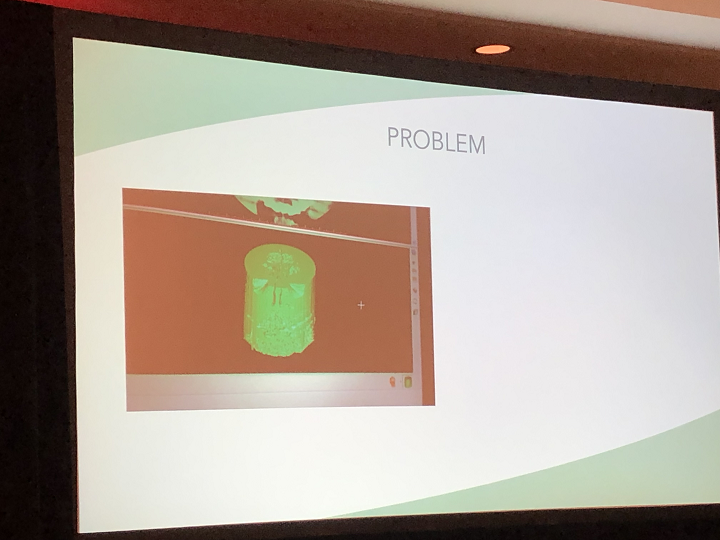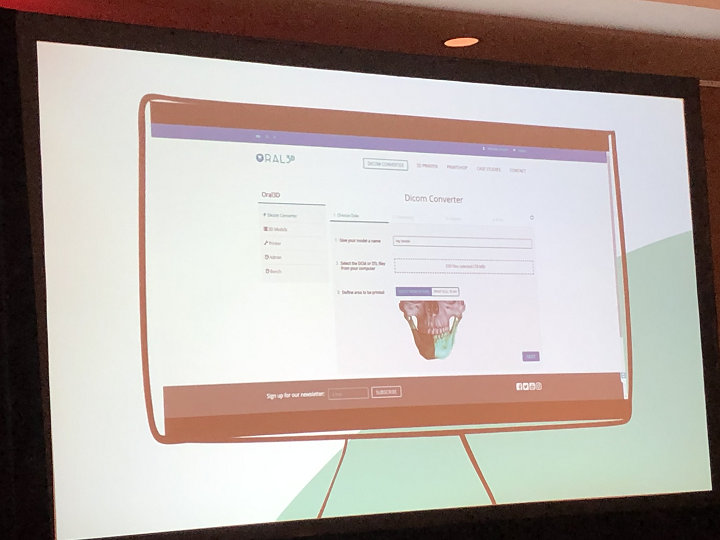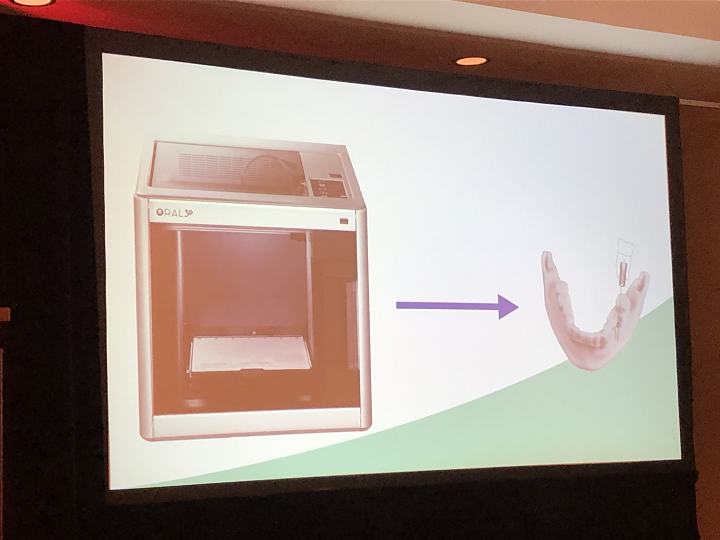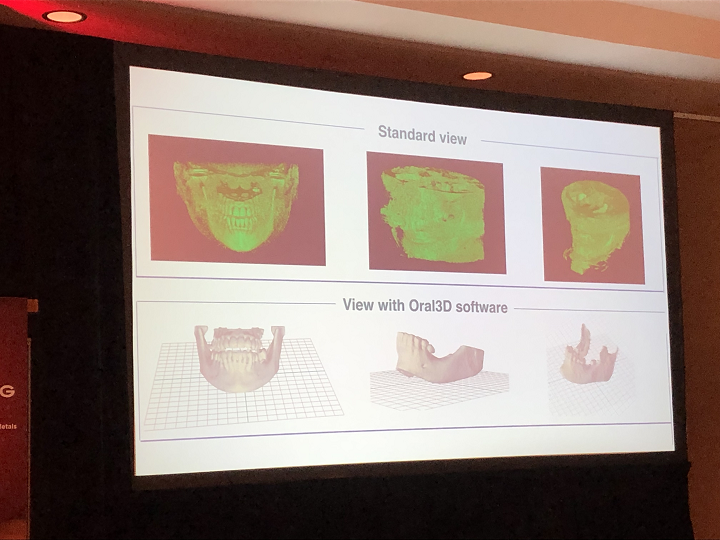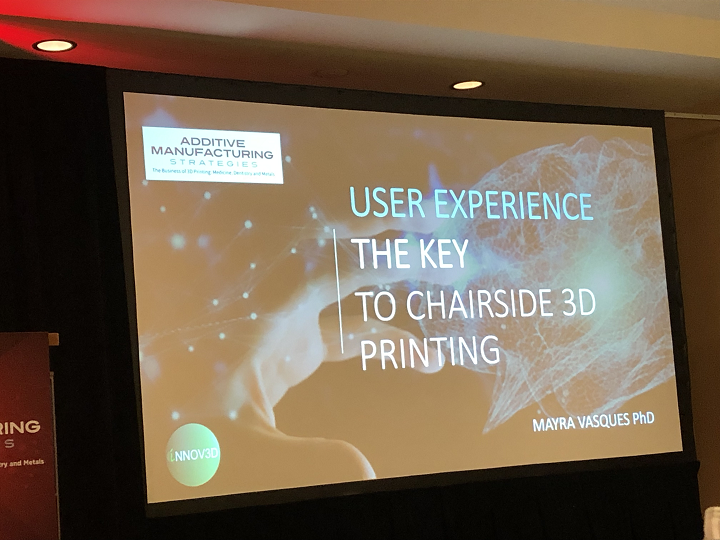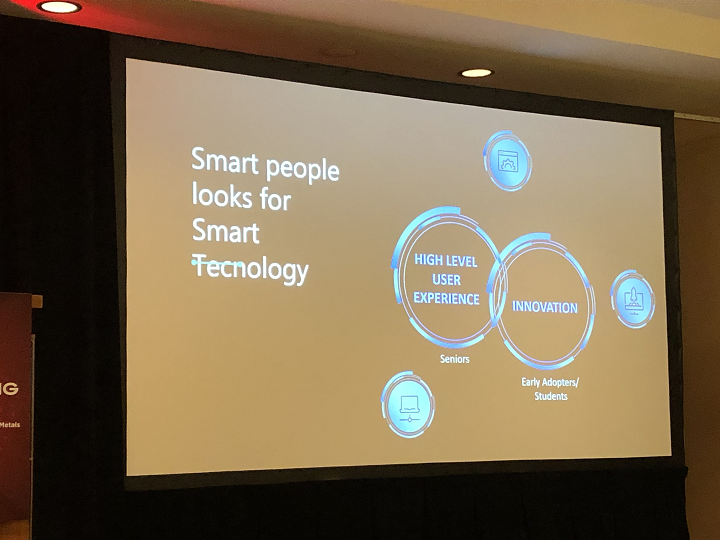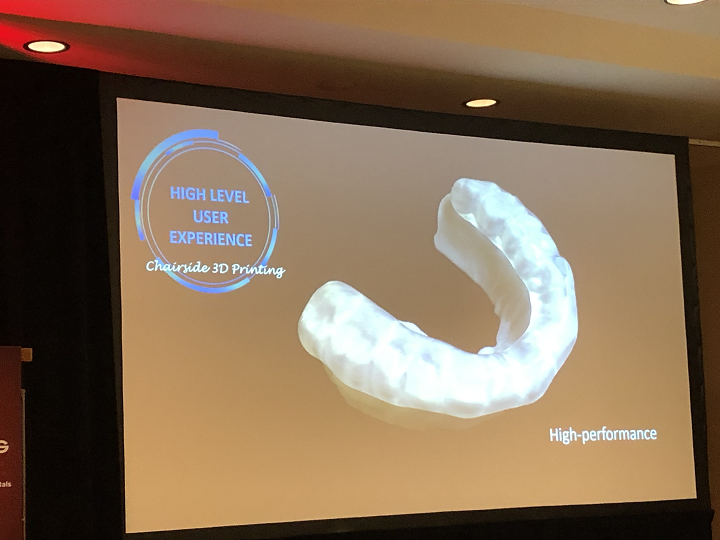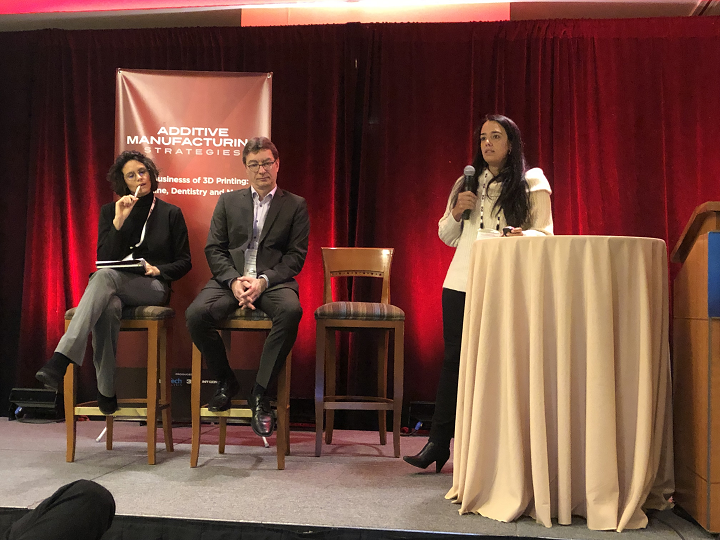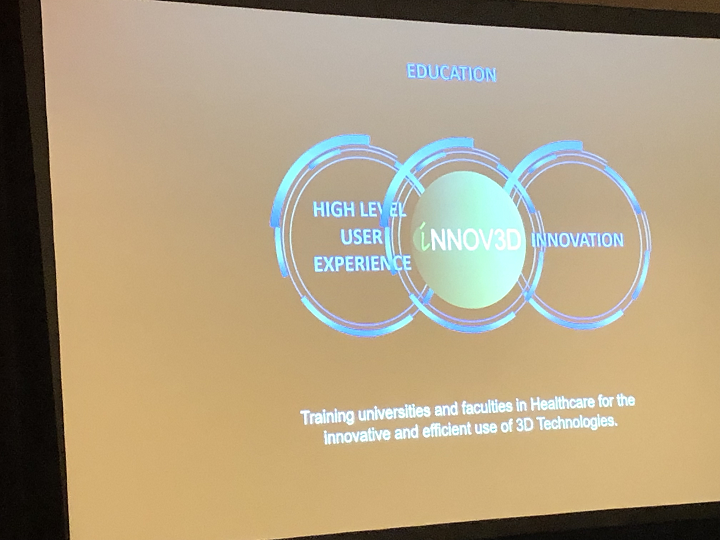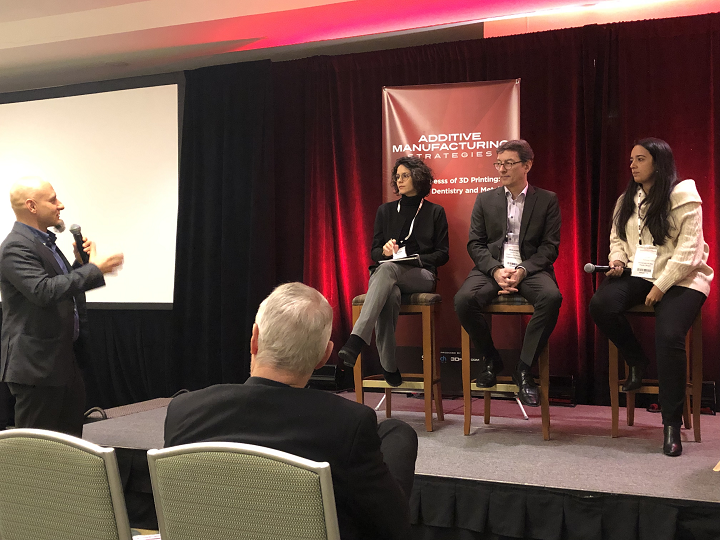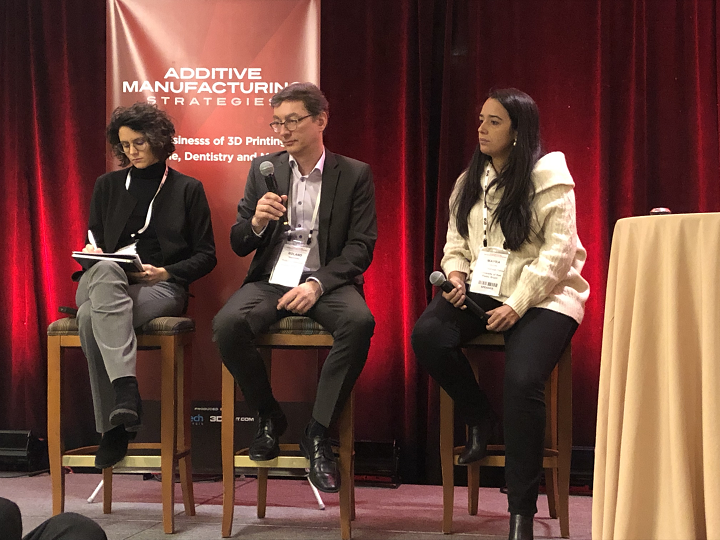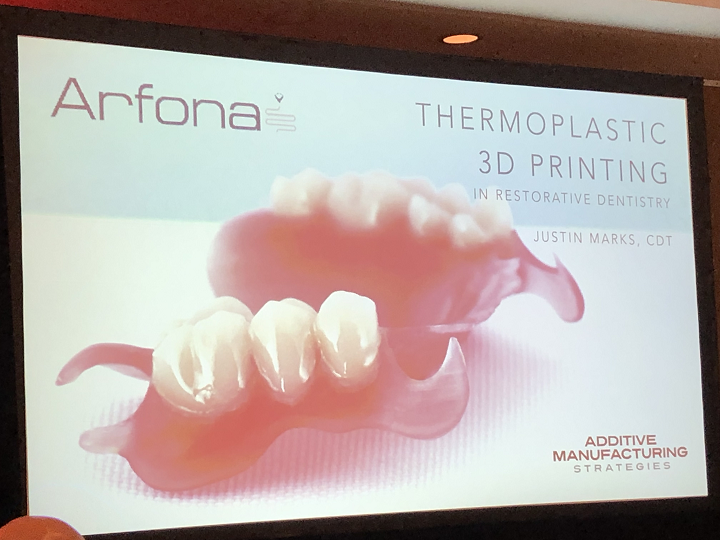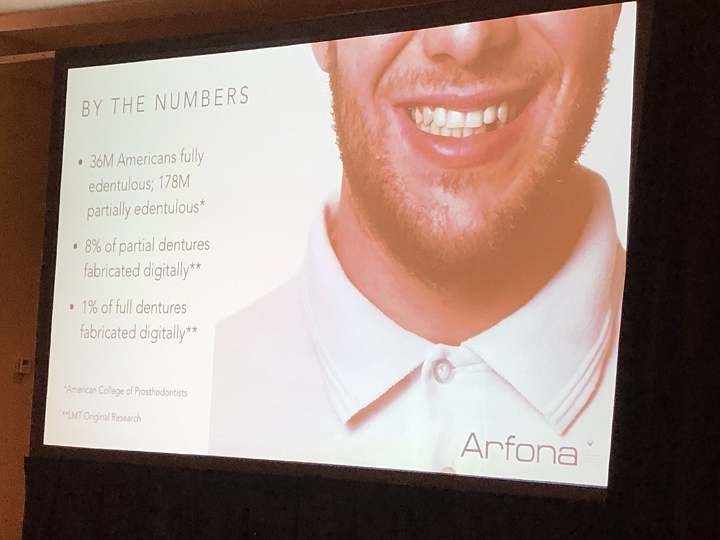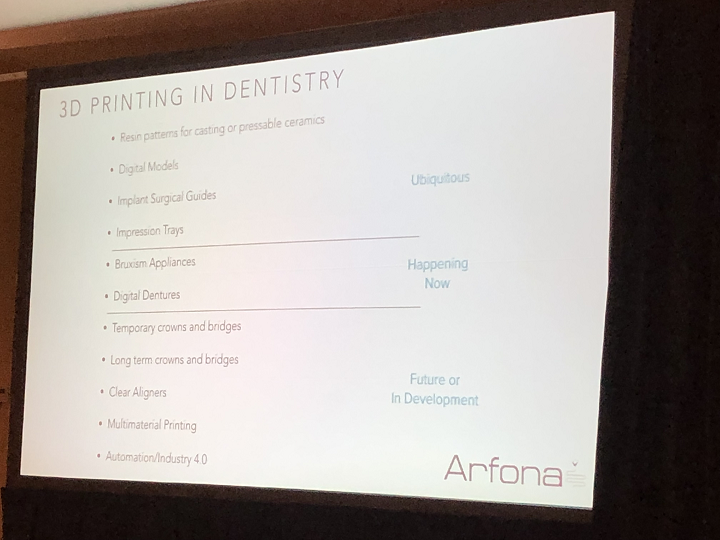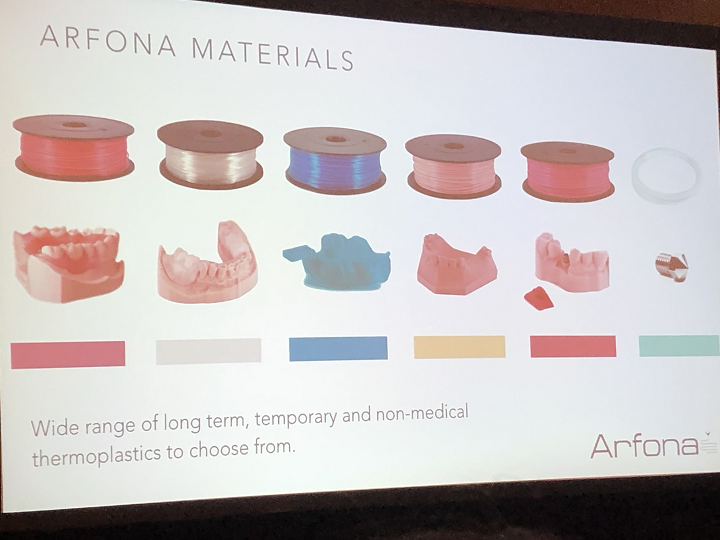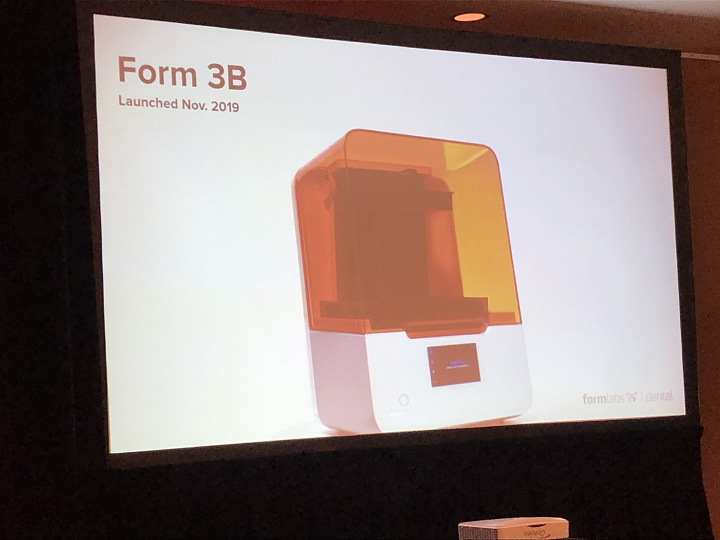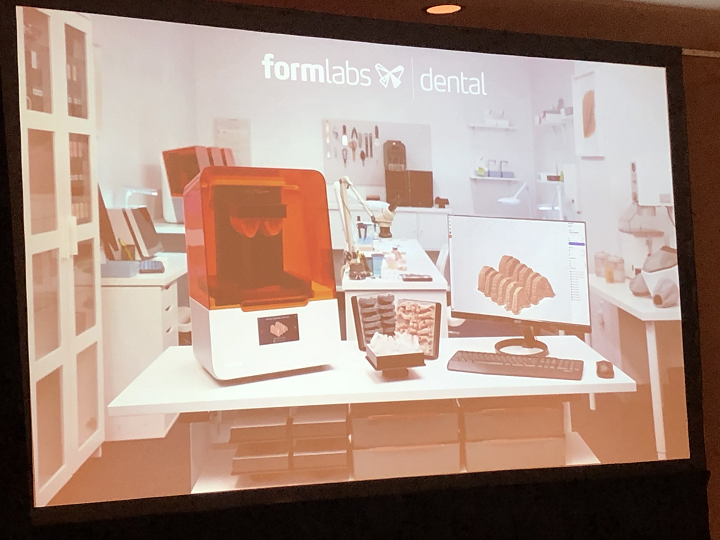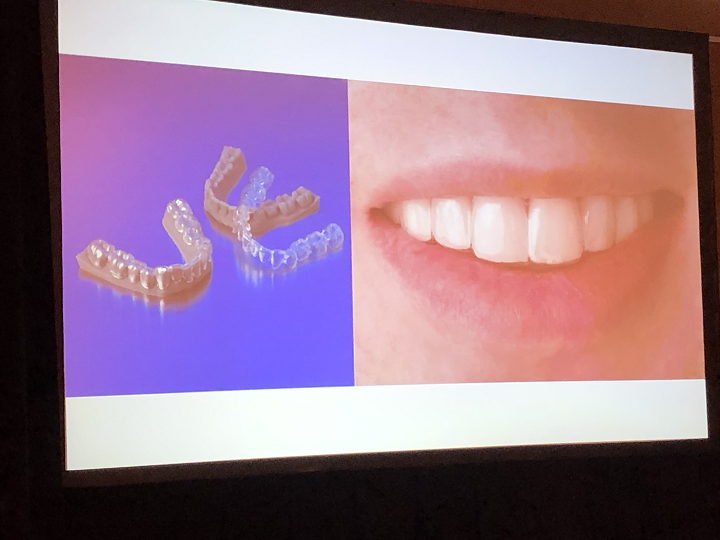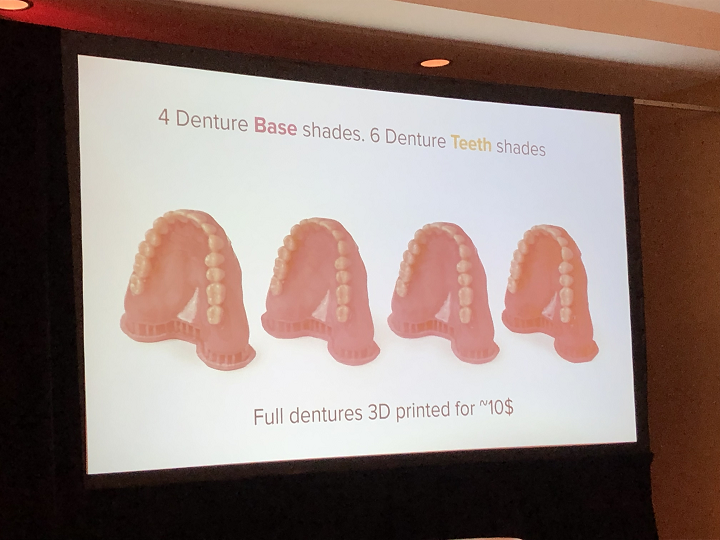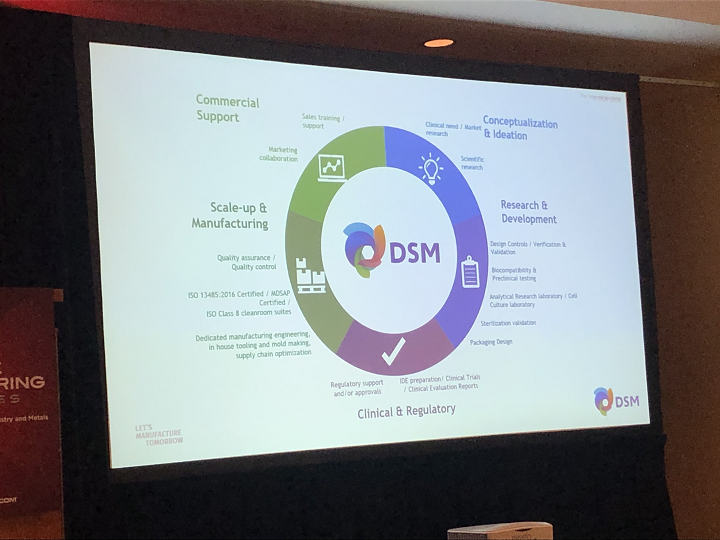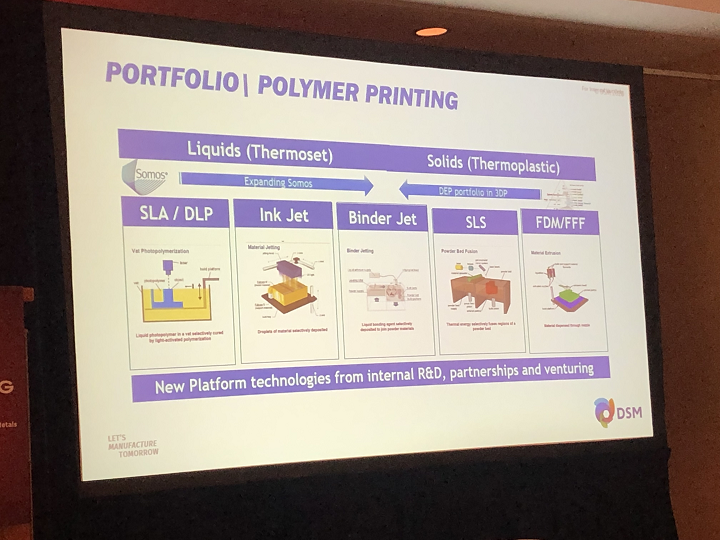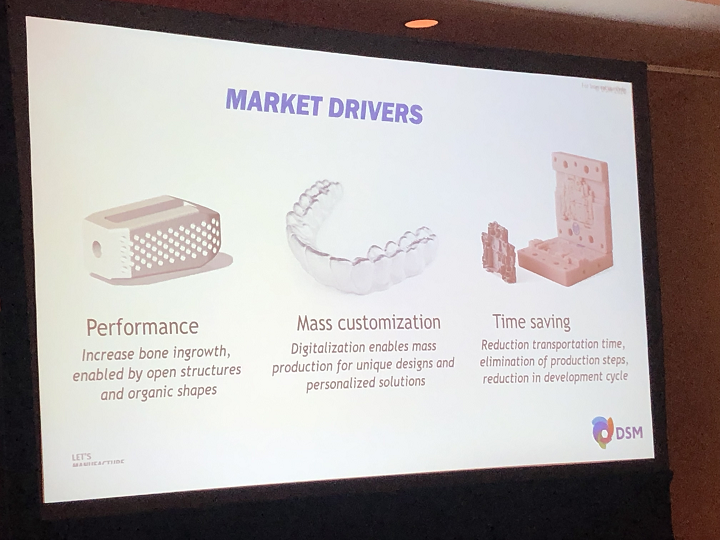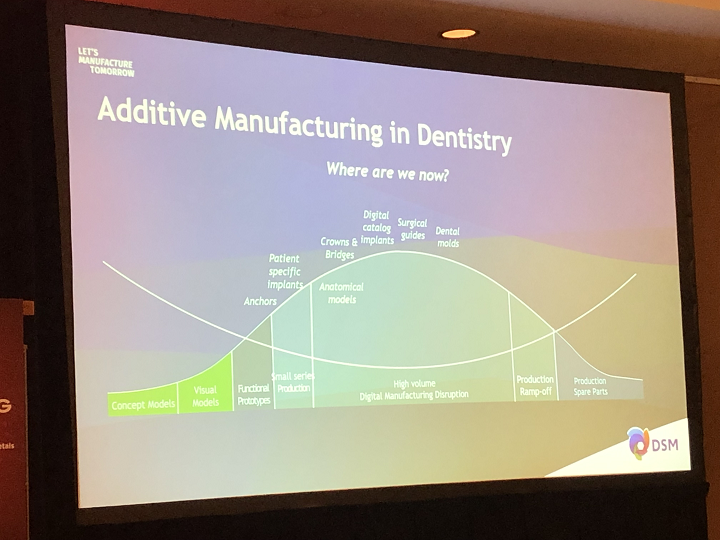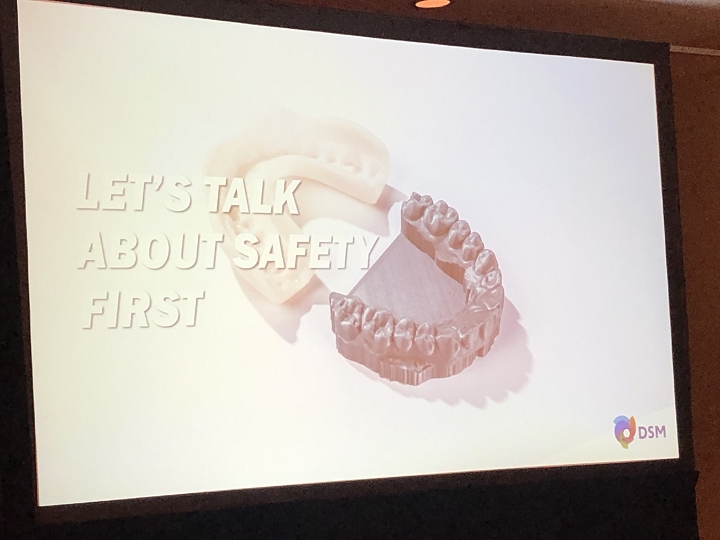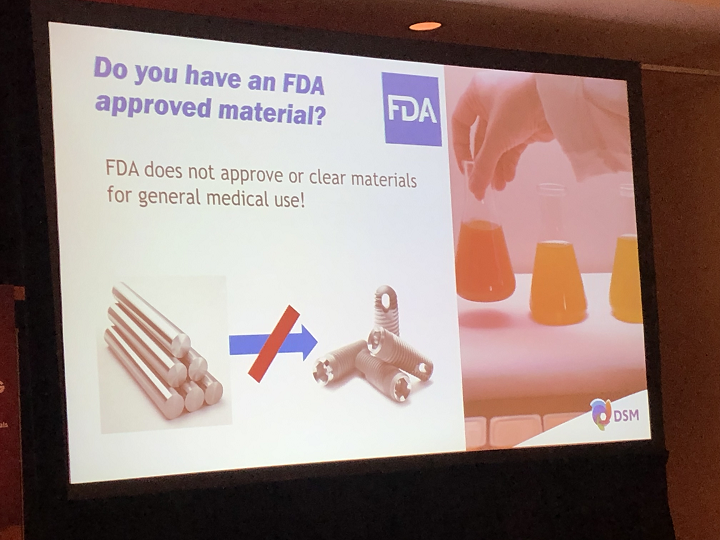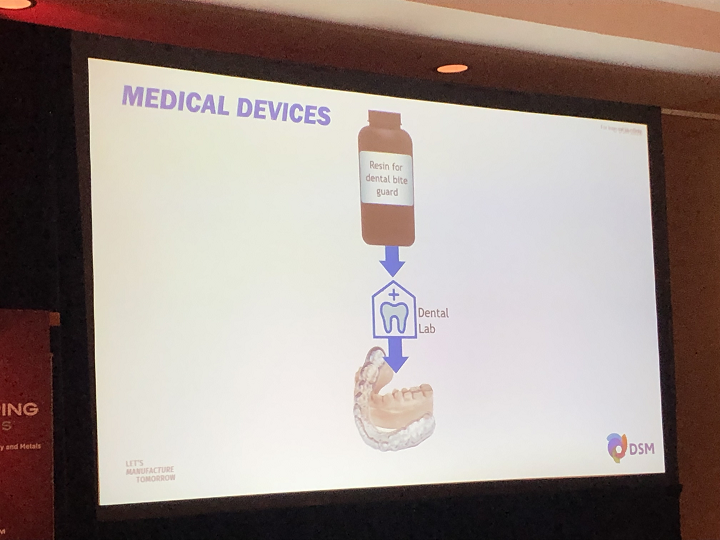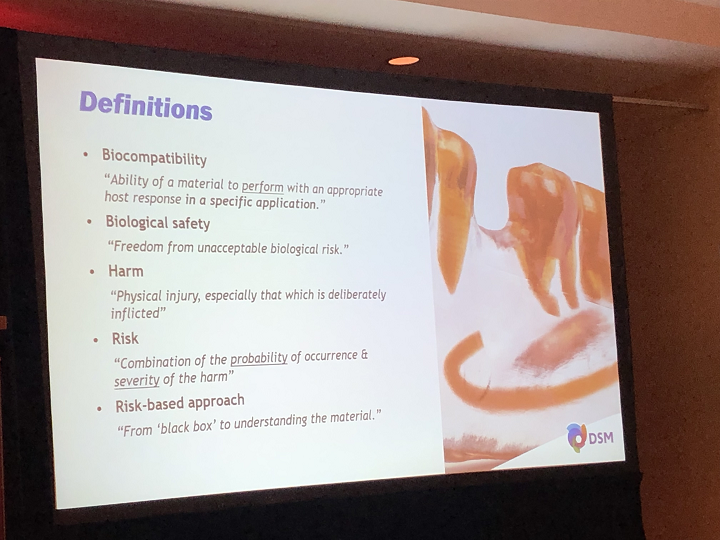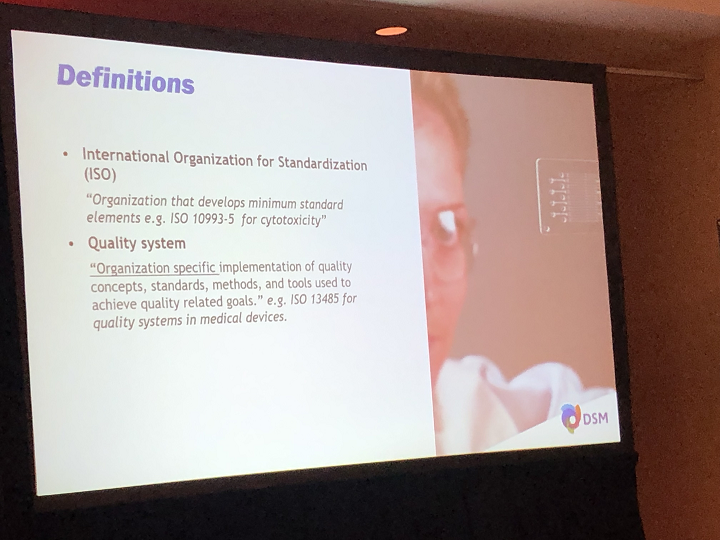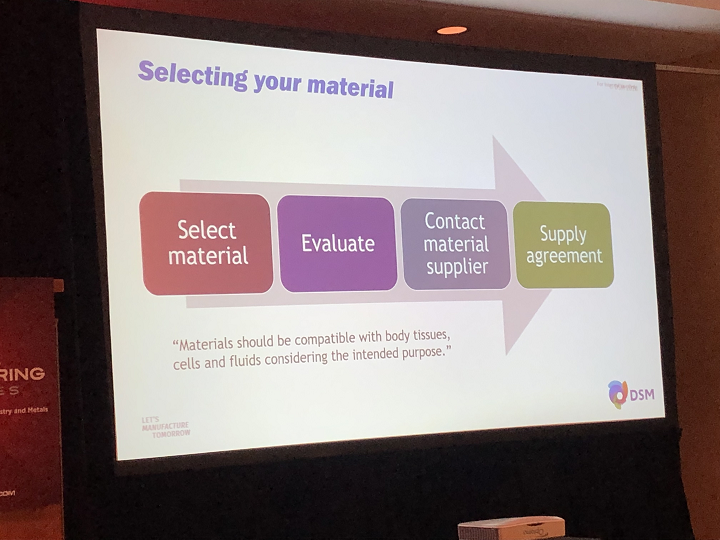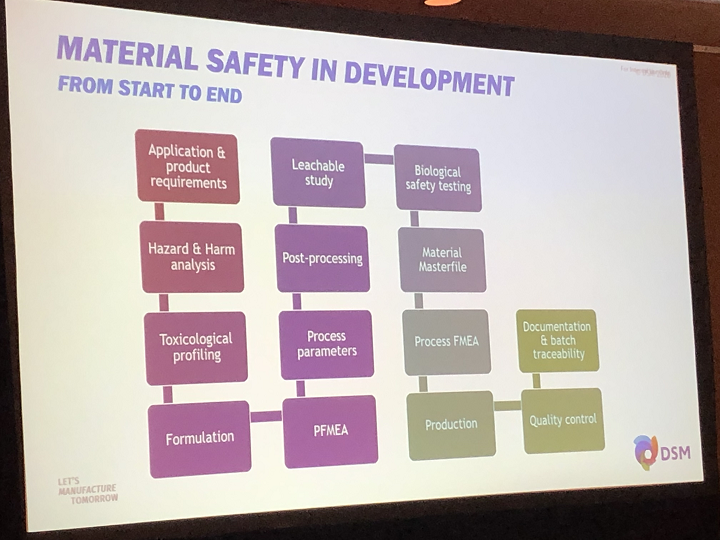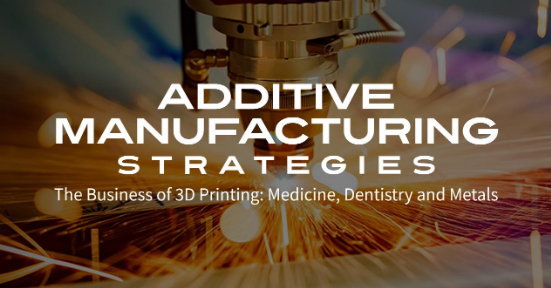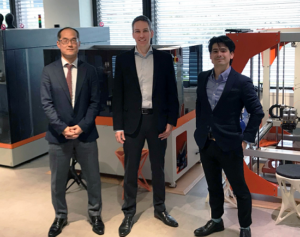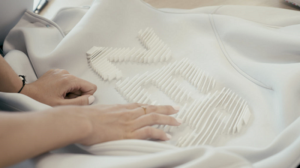DSM acquires part of Clariant’s 3D printing materials portfolio
Royal DSM Acquires Portion of Clariant 3D Printing Materials
Royal DSM has announced that it will be taking over portions of the 3D printing portfolio of Swiss chemical giant Clariant, representing a somewhat dramatic shift in the additive manufacturing (AM) materials market. Specifically, DSM will now have a larger collection of filament, pellet and powder products for 3D printing.
The 3D printing materials space has become a competitive one since an increasing number of established chemical companies began entering the space. Among them was Clariant, a near $6.5 billion spin-off of Sandoz, once known as the inventors of LSD but which has since become Novartis, one of the largest pharmaceutical companies in the world. In 2017, Clariant launched its 3D printing business and, only three years later, Clariant has determined that AM materials don’t fit within its general strategy, though it will keep a foot in the market with its additives and flame retardants.
The Dutch nutrition, health and materials multinational DSM, meanwhile, has been in the additive materials business for over 25 years and has been rapidly increasing its growth in the space particularly in recent years. Its finance capital arm, DSM Ventures, has poured money into a number of projects, including material startup Adaptive3D, smart inkjet 3D printing company Inkbit, post-processing firm Additive Manufacturing Technologies and Voxel8, a startup dedicated to multimaterial 3D printing. DSM continues to expand its materials horizons, as well, focusing on such pellet-based extrusion and flame retardant filament, among others.
Clariant is handing over several staff members, its background in powder development, a piece of its filament and pellet materials portfolio to DSM. Additionally included is a small production line for manufacturing small batches of materials, as well as some operations dedicated to 3D printing customer relations.
DSM suggests that these acquisitions will not only increase its overall product portfolio, but will allow for more agile production with “faster product tweaks based on application needs” due to both the expertise of the Clariant team that will be joining DSM and a “dedicated, highly flexible and high-speed compounding setup.”
Joris Peels, 3DPrint.com Executive Editor and SmarTech analyst, provided his insight into the news, saying, “[I loved] their rail product; the packaging was awesome, the marketing was really good; it was very slick and well done. It was smart of them to use their compounding and additives expertise to make flame retardant and other highly functional products. If the Clariant team brings its agility and speed, as well as application knowledge, to DSM it should make the [Dutch] giant nimbler.”
In particular, Peels noted how quick the Clariant team was in the market, adding that the acquisition could provide DSM with its mark in 3D printing filaments:
“Relative to other polymer companies the Clariant team really our executed and in a very rapid manner met the market with high quality compounds and filaments for specific applications. Clariants products, filaments, compounds and the selected additives are all very high grade and their products were very application focused and ahead of the curve,” Peels said. “DSM has yet to really make a mark in filaments and the Clariant teams’ agility and market knowledge could give DSM the edge that it seeks on application focused FDM filaments.”
As DSM continues to grow in the additive space, it will be competing against the likes of BASF, the world’s largest chemical company, which is also making serious moves within the space and at a rapid pace. The most notable and recent may be the purchase of 3D printing service bureau Sculpteo, as well as its large investments in Materialise and Essentium. As these transformations continue to occur in materials, we will certainly see the AM industry as a whole change shape in new and unexpected ways.
The post Royal DSM Acquires Portion of Clariant 3D Printing Materials appeared first on 3DPrint.com | The Voice of 3D Printing / Additive Manufacturing.
3D Printing and COVID-19, May 25, 2020 Update: DSM, Amazon, Fortify
Companies, organizations and individuals continue to attempt to lend support to the COVID-19 pandemic supply effort. We will be providing regular updates about these initiatives where necessary in an attempt to ensure that the 3D printing community is aware of what is being done, what can be done and what shouldn’t be done to provide coronavirus aid.
Dutch chemical company DSM has launched a platform for connecting healthcare providers and businesses for the supply of personal protection equipment (PPE) and other items. UNITE4COVID acts as a hub in which manufacturers and certifications labs can be linked to medical professionals in order to provide PPE and safety equipment.
Fortify is 3D printing tooling for injection molding meant to produce an adapter that converts a snorkel into a face mask. By making the tooling with its own 3D printing technology, the company believes that it could reduce the lead time for mold production by 75 percent, cutting a 14-day lead time to three days and potentially reducing costs from $2,000 to $300.
Origin has begun shipping its nasopharyngeal swabs, which are now FDA-registered, Class I, 510K medical products. Bulk orders of the swabs can be ordered on the company’s website.
A thirteen-year-old Tennessee student is using his own desktop 3D printer to produce ear savers, meant to reduce chafing caused by facial masks. Printing at a rate of eight ear savers in three-and-a-half hours, Sam Walker is running his printer 17 hours a day, giving them to local doctors, nurses, pharmacists and retirement home employees.
Also making ear savers is a collective of companies including Ultimaker, HP and other businesses, such as ImageNet Consulting, which has made over 10,000 such devices. While we have covered many of HP’s initiatives so far, Ultimaker’s involvement is made up of a two-part endeavor in which hospitals with pre-approved designs and material specifications are connected to 3D printing companies like 3D Hubs and ImageNet, a substantial U.S. reseller of IT technology and 3D printers, to produce the equipment.
Members of Amazon’s Prime Air mechanical design and hardware teams have joined a Washington State initiative that is producing face shields for healthcare workers. Based on feedback from medical professionals, the Amazon team claims to have improved the initiative’s existing face shield design, including material quality, so that they can be reusable and keep the shield in place more effectively. The new design also reduced sharp edges and pressure to the forehead, as well as improved print time. The Prime Air team subsequently made the U.S National Institutes of Health-approved design available for 3D printing and injection molding.
So far, Amazon has donated about 10,000 face shields and aims to deliver 20,000 more, using systems typically used to cut fiber materials for drone manufacturing to cut the face shield screens. Soon, the retail behemoth aims to mass produce face shields, suggesting it will be able to make hundreds of thousands over the next few weeks and have them available through the Amazon website. A recent blog post on the topic states:
“Because of the design innovations and the capabilities of our supply chain, we are confident we will be able to list them at a significantly lower price—almost a third of the cost—than all other reusable face shields currently available to frontline workers. We are looking to prioritize frontline workers and then eventually open up to all Amazon customers.”
During the pandemic, Amazon has faced harsh criticism from employees, including at Amazon warehouses and Whole Foods, who striking for better conditions as they continue to work amid the health crisis. While warehouse workers in multiple cities are demanding that Amazon shut down facilities where employees have been tested positive for COVID-19, CEO Jeff Bezos has grown his wealth by $25 billion since January 1, which the Institute for Policy Studies has described as “unprecedented in modern financial history.”
A leaked memo indicated that, after firing a worker who played a role in organizing a strike at a Staten Island distribution warehouse, company executives would discredit the worker and the larger movement to unionize Amazon workers. The employee was described as “not smart or articulate.”
According to VICE, who received the leaked documents, the company has attempted to cover its labor record in the midst of the pandemic with public relations efforts. Included in those efforts is the possibility of making free masks, with Amazon General Counsel David Zapolsky saying that the corporation should come up with “different and bold” ways for giving away surplus masks.
3D-printed medical supplies have obviously generated a lot of positive PR for companies involved in producing them. What this recent news could indicate is that the move by Amazon to participate in making 3D-printed face shields is part of a larger campaign to generate good publicity in the face of its labor disputes. Because we have seen multiple other companies laying off workers also participate in the production and delivery of medical supplies, such as GE and Boeing, it might not be unreasonable to think that similar campaigns are under way by other entities.
As the pandemic continues to grip the world, we will continue to provide regular updates about what the 3D printing community is doing in response. As always, it is important to keep safety in mind, remain critical about the potential marketing and financial interests behind seemingly good humanitarian efforts from businesses, and to do no harm.
The post 3D Printing and COVID-19, May 25, 2020 Update: DSM, Amazon, Fortify appeared first on 3DPrint.com | The Voice of 3D Printing / Additive Manufacturing.
3D Printing Industry News Sliced: Sonda SYS, Sintratec, Nanofabrica, DMG MORI, RPS, PostProcess
AMS 2020: Panels on 3D Printing Materials and Applications for Dental Industry
At our recent Additive Manufacturing Strategies 2020 in Boston, co-hosted by SmarTech Analysis, many different topics were discussed in keynotes and panels, such as binder jetting, medical 3D printing, and different materials. Dental 3D printing was also a major topic of discussion at the event, and I attended three panels that focused on additive manufacturing for dental applications.
The first, “Into the dental and oral surgery office,” had three panelists: Dr.-Ing. Roland Mayerhofer, the Product Line Manager for Coherent/OR Laser; CEO Manager of Oral 3D Martina Ferracane; and Mayra Vasques, PhD, a dental prosthesis fellow at the University of São Paulo in Brazil.
Dr. Mayerhofer went first, and provided a quick overview of Coherent’s laser powder bed fusion (L-PBF) systems, and the dental applications for which they can be used.
The versatile CREATOR is the company’s open system, and can print with multiple materials, such as brass, cobalt chromium, steel, and Inconel.
“As long as it works, you can put any powder in you want,” Dr. Mayerhofer said about the 3D printer.
He explained said that the CREATOR setup is “typical but can be as big as a stand-up fridge, not the American double-size.”
You can take a look at the rest of the printer specs above, along with a few features that will be added to the new system that’s coming in 2021, such as two powder hoppers and a build platform.
“Then you can take them out, put fresh hoppers in, and keep going,” Dr. Mayerhofer said.
He stated that the dental field is likely one of the first major adopters of metal additive manufacturing, as the technology offers 100% personalization and can fabricate small, complex parts out of existing materials, like titanium alloys…all perfect features for the dental industry.
Dr. Mayerhofer then discussed Coherent’s digital dental workflow, which can get from scanning to a completed 3D printed part in 12 steps. Some of these steps include designing the CAD file and preparing it for 3D printing in the company’s APP software suite.
Later process steps are annealing, and then sandblasting, support removal, polishing, ceramic coating – added manually – and voila, you have a finished product.
The Dental Cockpit is Coherent’s latest addition. The CAM software makes it easy to load and print parts, which means that the digital dental workflow as a whole is much less complex. There’s one click to select the file, another to choose the materials and properties, and then a final click to generate the G-code.
Dr. Mayerhofer said that Coherent’s whole dental workflow, 3D printing on the CREATOR include, takes just one work day to fabricate a completed bridge in the dental lab.
After the cast skeleton is scanned, the dental lab begins preparing the CAD data at 8 am. Then the print job has to be prepared in Dental Cockpit, and 3D printing typically begins in the morning.
Once the parts are removed from the print bed, post processing is completed, and then a porcelain coating is added before the product is subjected to heat treatment and polishing. The completed bridge is then ready to go by 4 pm.
Dr. Mayerhofer noted that a dental lab’s ROI on the CREATOR 3D printing system is less than a year…typically about six months, in fact.
Then it was Ferracane’s turn to explain how her company, Oral 3D, makes 3D printing simple for dentists, even as it’s occurring at the industrial level.
“Our solution makes it extremely simple for dentists to bring 3D printing to their practice,” she said.
She presented a brief overview of the US dental market, noting that some of the major applications for 3D printing in the field include aligners, crowns, surgical guides, and soft tissue models, which dentists use to test procedures ahead of time.
“Usually today, the way most of these models are done is through intraoral scanning,” she explained.
Ferracane said that SLA technology makes it much easier to make these soft tissue models. But, even so, they can still only be used for testing purposes most of the time.
3D printed models of hard tissue – bone – are also fabricated, but she said that they’re not used often, as it’s difficult for dentists to come up with STL files of just the hard tissue.
She pulled up a slide that had the world “PROBLEM” across the top. The image appears to be scan data of bone, which looks pretty hard to read.
“It’s not easy for dentists to make this into something printable by cleaning up the images,” Ferracane explained. “So they can pay to outsource it to labs to clean it up. But our 3D printing software automatically does this. Just drag the CT scan, and we’ll take care of changing it from DICOM to STL. With one click, we can then convert STL to G-code.”
She said that while it’s obviously good to fabricate dental applications this way using Oral 3D’s printer, it will work with whatever system you’re already using.
These 3D printed models serve a variety of purposes – they can improve communication with patients, help in treatment planning, and even “broaden learning.” Ferracane mentioned that the company has partnerships with NYU and Harvard for this last.
Other applications include bone blocks, made-to-measure titanium membranes, and maxillofacial surgery. Additionally, she stated that Oral 3D recently began collaborating with dental surgeons, who use the company’s 3D printed dental models for planning and patient communication.
She finished by stating that the company believes FDM printing can “be a good value add for dentists.”
Vasques finished things by sharing her research into how things look, dental 3D printing-wise, from the point of view of clinicians.
“It’s common for most to be scared of using 3D printing,” she explained. “They think it’s plug and play, and it’s not.”
For her research, she divided users into two separate groups – high level experience (seniors), and innovation (early adopters and students).
“We are trying to figure out how these people understand the technology,” she said.
High level users expect accuracy, efficiency, high quality technology, and high-performance materials for the purposes of chairside 3D printing. Vasques said that these users “don’t want to wait 2-3 hours to make products by hand.”
“In university, we’re trying to establish protocols and research to help these people have the results they are expecting.
“We’re trying to solve problems, like mouthguards for sports.”
Vasques said that last year, she and her team published three articles about dental 3D printing topics, such as 3D printed occlusal devices and post-processing. She launched INNOV3D the same year, in order to help train professors in using dental 3D printing.
“We have an online training platform, educational materials, and 3D lab,” she stated.
Once she finished and sat back down, Davide Sher, the panel’s moderator, asked the other two panelists how they would address the challenges that Vasques listed, and how they would make dentists understand more about dental 3D printing.
Ferracane answered that most dentists aren’t buying 3D printers today, because they’re initially taught that the systems are really easy to use when they’re not. Once they run into issues with SLA technology, they get frustrated and just start outsourcing the work instead.
“Then they’re really dissatisfied, because they’re complicated and not just plug and play. We need to help them understand that they can bring the technology back to their office.”
Sher noted that dentists don’t really have the time to learn about the more advanced types, and so asked if the companies directed their technology to users in dental labs; Dr. Mayerhofer said yes.
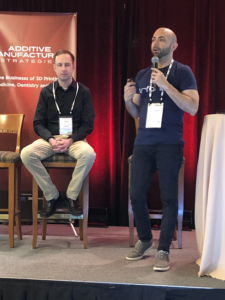 After a short break, the next session, “Dental lab experiences with 3D printing,” began. While Les Kalman, an Assistant Professor for Restorative Dentistry at Western University’s Schulich School of Medicine, was unable to make AMS 2020, Arfona founder and CEO Justin Marks and Sam Wainwright, Dental Product Manager for Formlabs, were both ready to go.
After a short break, the next session, “Dental lab experiences with 3D printing,” began. While Les Kalman, an Assistant Professor for Restorative Dentistry at Western University’s Schulich School of Medicine, was unable to make AMS 2020, Arfona founder and CEO Justin Marks and Sam Wainwright, Dental Product Manager for Formlabs, were both ready to go.
Marks went first, explaining that Arfona, founded in 2017 by dental technicians and 3D printing enthusiasts on “the core belief that thermoplastic dental materials should not be substituted for inferior photopolymers,” has been working to “bring 3D printing into the world of dentistry.” The company’s flagship product is its 3D printed flexible nylon dentures.
He pulled up a slide that cited research stating that 36 million Americans are completely edentulous, meaning without teeth, and that 178 million are partially edentulous. But even so, Marks said that there’s an “astronomical” number of people who are still not wearing dentures.
“Most people don’t think about this until it happens to you or someone you know,” he said about missing a tooth. “It’s not always that easy or cheap to fix this with implants.”
According to a survey, only 8% of dentures are digitally fabricated, which means most are still made by hand using analog methods.
Marks said that even though 3D printing is “becoming more of a buzzword” in the dental industry, most of the materials “have largely stayed the same,” and based on the same technologies and principles. Extrusion-based AM is not used often in dentistry, and powder bed fusion (PBF) is mostly limited to metals, not polymers.
Marks went through a brief history of 3D printing in dentistry. Ubiquitous applications include impression trays, digital models, and resin patterns for casting, while digital dentures are currently happening and things like clear aligners, temporary and long-term crowns and bridges, and multimaterial printing are in development for use in the future.
He said that the ubiquitous ones have one thing in common – they’re used once and then thrown away.
“We’re still not doing much with crowns and bridges,” Marks said. “Clear aligners are the holy grail, and direct printing of the aligner is still a ways off, though all companies are probably working on it.”
Aronfa’s dental 3D printer is the r.Pod, which is a modified version of a Makerbot clone. The dual extrusion filament system is optimized for all of the company’s thermoplastic materials.
Then it was Wainwright’s turn to talk about dental 3D printing at Formlabs. He agreed with Marks that “FDM and thermoplastics have an incredible place” in the dental industry.
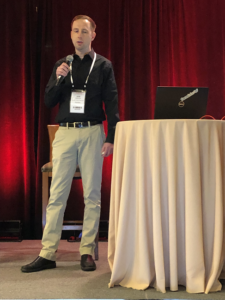 When the company was founded in 2012, its goal was to make professional-scale 3D printing accessible and affordable for everyone. Now Formlabs employs over 500 people at its multiple locations around the world, and has sold more than 50,000 3D printers.
When the company was founded in 2012, its goal was to make professional-scale 3D printing accessible and affordable for everyone. Now Formlabs employs over 500 people at its multiple locations around the world, and has sold more than 50,000 3D printers.
Wainwright explained that the Form 3B desktop printer, optimized for biocompatible materials, has many dental-specific features, materials, and software, in addition to automated washing and post-curing systems “to help tie in end-to-end dental workflows.”
In addition, Formlabs offers dental materials, and launched its dental service plan (DSP) along with the Form 3B in 2019. Because there are high demands, the 3D printing process is complex, and the DSP offers support.
“We are committed to 3D printing for dental,” Wainwright stated. “We have over 20 people in the dental business unit. But we have the resources of a 500 person-plus company.”
While most are made overseas, Formlabs Dental is now developing photopolymers in my home state, since the company acquired its main material supplier, Ohio-based Spectra Photopolymers, last year. Formlabs’ biocompatible Surgical Guide Resin is the company’s first material made in an ISO-certified facility.
“It’s exciting to have intimate control over design aspects,” Wainwright said.
The image above is an example of the Surgical Guide material. Wainright explained that the light touch supports are very easy to remove, which means that there isn’t a lot of time wasted in post-processing.
He said that 36% of dental labs in the US use 3D printing technology, which makes them very “cutting edge.”
“There’s a ton of market opportunity for dental to go digital,” he said. “We have 30% of this market – we’re the biggest player in dental laboratories and will continue to grow, but compared to Invisalign, it’s not really that much.”
So far, Formlabs has 3D printed more than 10,000,000 parts for the dental industry. Wainwright predicts that in ten years or less, “everything in dental will be 3D printed.”
He reiterated to the room that Formlabs has “a whole host of materials” for dental applications, four of which are solely for fabricating models, which are “really critical to dentists.” As dental offices adopt intraoral scanning technology, it’s helpful to take the scan data and turn it into something physical. Wainwright mentioned that Formlabs’ Grey Resin can achieve fast, accurate prints, and that it’s good for thermoforming as well.
The company’s Draft material is “accurate enough to create models in less than 20 minutes,” which makes it perfect for creating retainers on the same day as a patient’s appointment. Model Resin is good for accurately restoring dental models, while the biocompatible Dental LT Clear Resin can be used to print occlusal splints in addition to models.
Formlabs’ Digital Dentures solution comes in multiple shades to match a patient’s teeth, and a full set can be 3D printed for less than $10, which Wainwright says is “really a game-changer.”
“We want to make treatments easier, better, and faster,” he said in conclusion.
“3D printing is still very early in dental, this is just the beginning. The materials will just keep getting better, it’s an exciting place to be.”
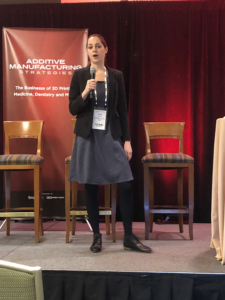 Then it was time to eat lunch and chat with other attendees…or, as I did, inhale food and then find a spot in the hallway near an outlet and get a little work done.
Then it was time to eat lunch and chat with other attendees…or, as I did, inhale food and then find a spot in the hallway near an outlet and get a little work done.
After the lunch break, I sat in on my last panel at AMS 2020, “3D materials for dental applications.” It was a panel of one – Gabi Janssen, Business Development Manager and Global Leader, Healthcare Segment Additive Manufacturing, for DSM Additive Manufacturing. She presented on digitalization in healthcare and dentistry.
She tried to play a short movie about what the company does, but due to technical difficulties there was no sound, so she narrated instead, explaining that DSM is “a material company” that also does a lot with nutrition – a brand behind the brands.
The company also has a biomedical department, which helps deliver advanced healing solutions for AM applications, including bioceramics, collagen, polyethylenes, polyurethanes, and hydrophilic coating.
“What we have on the market is filaments,” Janssen said, pulling up a list of the dental materials DSM offers.
Several of the company’s products are geared toward the healthcare market, such as Somos BioClear for dental guides and anatomical models.
“So how do we develop a new material?” Janssen asked. “We’ve discussed 510(k) clearance materials, and you have to work all together. We look at the application, and determine what we need – printer, software, material – to fit what the end user needs.”
She pulled up a slide of the major market drivers in 3D dental printing – performance, mass customization, and time-saving.
“What kind of applications do we have in dentistry?” she asked.
To answer her own question, she showed a brief history of digital dentistry, starting with the first 3D printed part in 1983, moving on to DSM’s 3D printing resin in 1988, the beginning of aligner manufacturing in 1997 and medical modeling in 2000, and DSM’s dental materials passing USP VI in 2008. For 2020 and beyond, hopefully we’ll see the availability of direct aligner materials.
“I think there’s still a lot of data needed to show it’s good,” Janssen said about where the industry currently stands. “Reimbursement is difficult, we need this data to back it up.”
The topic of FDA clearance obviously came up a lot at AMS 2020. Janssen said that DSM has a resin that’s certified for use in dental bite guards, and a general purpose resin that isn’t certified but can be used to make FDA-cleared aligners.
“The end device needs the clearance,” she reminded the room.
She brought up how Materialise was the first company to receive FDA clearance for software about 3D printing anatomical models for diagnostic use. Materialise Mimics inPrint translates the data for the model to the 3D printer. Then, combined with a specific printer and material, it’s possible to fabricate “the model they actually want within a certain safety margin.”
“But, if you want to print medical models, just for patient communication, it does not need to be cleared, because it’s not a medical device,” she explained.
The slide above explains what makes a medical device controlled, i.e. needs clearance, while the below slide lists some very useful definitions, including biocompatibility and risk.
Janssen then brought up the “sometimes confusing standards,” such as ISO standards.
“Depending on what we do with the material, and how long it goes in the mouth, there are different risk associations,” she explained.
In terms of product classification, Class I is the least risky. But, the higher you go up in class, the more research is required to show that the 3D printable material won’t harm patients.
She said that the regulatory industry is changing to have more focus on software, with higher regulations for that software, because it “needs to be validated in combination with the material and equipment.” Additionally, there is more of a focus these days on understanding and managing risks, as well as reducing animal testing…always good news!
When choosing the proper filaments for your workflow, you should start by working with the dentist on treatment planning. Then, once the patient’s mouth has been scanned, you can create the design in the software. Then the build has to be prepared, which takes some patience and precision – you need to enter the optimal print parameters, and add supports if they’re needed. Then, after the print is complete, it needs to be removed from the bed, supports (if there are any) need to be taken off, and there may even be grinding and painting involved before the final quality check.
“Many process variables can impact the safety of the final end product,” Janssen noted. “So you need to understand the effect the material can have on patients.”
Finally, there are also plenty of steps to follow to ensure material safety in development, so it’s important to follow the instructions your supplier gives you.
Then it was time for some questions. One attendee asked why dentists aren’t all adopting AM, since some products, like mouthguards, look pretty easy to make in the back office.
“This may look easy, but it’s actually not,” Janssen explained.
 She went on to say that the product or device may not always “come out right the first time.” There are a lot of parameters to look at, and potentially tweak, in order to achieve the desired result. A lot of people can get frustrated if it doesn’t work right the first time.
She went on to say that the product or device may not always “come out right the first time.” There are a lot of parameters to look at, and potentially tweak, in order to achieve the desired result. A lot of people can get frustrated if it doesn’t work right the first time.
“What we’re doing now – if you bring your design to us, we’ll do the tweaking for you, as our software has all of the maximum and minimum numbers needed for parameters,” she said.
3D printing thought leader and author John Hornick offered his take on the question, as he has some experience with the matter. He explained that most dental offices are private, though many dentists are consolidating their practices into larger ones, “and their appetite for spending money on these machines may go up.” But, SmarTech doesn’t think the average dentist will spend that much for larger, more expensive 3D printers. That’s why some companies, like Arfona, are working on simpler material extrusion systems.
Another attendee said that it seems like 3D printing companies are just throwing technology at various markets and praying that it sticks. Dentists want to be dentists, and not spend their time dealing with issues like print parameters and melted filament.
“We, as technology providers, need to raise our game and make this work for these people,” Janssen stated.
I think that’s a great note on which to end my AMS 2020 coverage – we, the AM technology providers, need to show the rest of the world how 3D printing can work for their industries.
We hope to see you next winter for Additive Manufacturing Strategies 2021!
Discuss this and other 3D printing topics at 3DPrintBoard.com or share your thoughts below.
The post AMS 2020: Panels on 3D Printing Materials and Applications for Dental Industry appeared first on 3DPrint.com | The Voice of 3D Printing / Additive Manufacturing.
Prodways Group integrates 3DEXPERIENCE, establishes XD Innovation Europe
3D Printing News Briefs: January 16, 2020
In today’s 3D Printing News Briefs, we’ve got a little business news, followed by stories about materials, and finally ending with some 3D printed fashion. PostProcess Technologies is expanding in Japan with a new partnership. Smart International has launched a material partnership program, and CRP Technology is introducing a new Windform material. Finally, a Spanish fashion brand is using BCN3D’s technology to make some of its clothing.
PostProcess Technologies Enters Asian Market with New Partnership
Automated post-printing solutions provider PostProcess Technologies Inc. announced that it’s entering the Asian additive manufacturing market, and expanding the reach of its solutions, by naming K.K. IRISU (C. ILLIES & CO., LTD.) as its first distribution partner in Japan. PostProcess chose the high-quality industrial machinery and technologies specialist, to help serve its growing base of customers in Japan and represent its data-driven technologies because of its expertise and experience. The partnership is mutually beneficial, as ILLIES can now offer its customers access to technology that will automate common post-printing processes and enable “additive manufacturing at scale.”
“K.K.IRISU’s main objective is to educate the Japanese market in additive manufacturing and to continue to be the solution provider for the Japanese 3D manufacturing world. We feel that by adding PostProcess Technologies to our lineup, will help assist the Japanese market to compete with other countries in Additive Manufacturing as well as globally maintain the high standards of the tag ‘Made in Japan’,” said Dr. Frank Oberndorff, President of K. K. IRISU.
Next month, both companies will exhibit at the Design Engineering & Manufacturing Solutions (DMS) 2020 Expo.
Smart International Introduces Material Partnership Program
 This week, Smart International, the global brand licensee in 3D printing for KODAK, announced the launch of a new Materials Partnership Program in order to help its customers achieve a repeatable 3D printing experience, while also meeting the demand for high-quality, yet easy-to-print, engineering materials. The company has already developed, and tested, material profiles for filaments from its partners BASF, Clariant, and DSM, which will help provide optimal conditions for these third party materials on the Portrait 3D printer. Print profiles were created from this data, and can either be accessed from the KODAK 3D Cloud or downloaded from the Smart3D website.
This week, Smart International, the global brand licensee in 3D printing for KODAK, announced the launch of a new Materials Partnership Program in order to help its customers achieve a repeatable 3D printing experience, while also meeting the demand for high-quality, yet easy-to-print, engineering materials. The company has already developed, and tested, material profiles for filaments from its partners BASF, Clariant, and DSM, which will help provide optimal conditions for these third party materials on the Portrait 3D printer. Print profiles were created from this data, and can either be accessed from the KODAK 3D Cloud or downloaded from the Smart3D website.
“We feel it is of vital importance to continually adapt to the ever-evolving 3D printing market. Partnering with top filament companies like BASF, Clariant and DSM gives the customer the opportunity to choose the material that best fits their project, and gives them confidence to use these high-quality 3rd party materials with the KODAK Portrait 3D Printer,” said Roberto Gawianski, the CEO of Smart International. “We are pleased to be able to assist in the development and evolution of 3D printing filaments, and will continue to support progress in this area.”
BASF material profiles include Ultrafuse ABS Fusion+, Ultrafuse PAHT CF15, Ultrafuse PA, and Ultrafuse Z PCTG, while Clariant now has a profile for its popular 20% carbon fiber-reinforced polyamide 6/66 PA6/66-CF20 filament. Smart International also created material profiles for DSM’s Novamid ID1030, Novamid ID1030 CF10, a carbon fiber filled PA6/66 copolymer filament and Arnitel ID2060 HT.
CRP Technology’s New Windform P2 Material
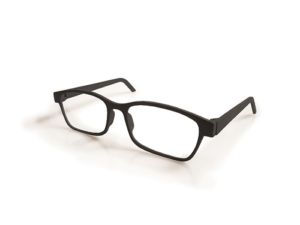 Italian company CRP Technology is introducing the latest material from its Windform P-LINE range – the glass fiber-reinforced thermoplastic polyamide Windform P2, which the company states has “excellent mechanical properties” for its High Speed Sintering (HSS) technology. The new material has high tensile strength (39.24 MPa), combined with increased stiffness (2925.20 MPa), and is great for insulating, as it is glass fiber-filled. Windform P2 is good for producing end-use parts that need high stiffness, as well as manufacturing components with detailed resolution.
Italian company CRP Technology is introducing the latest material from its Windform P-LINE range – the glass fiber-reinforced thermoplastic polyamide Windform P2, which the company states has “excellent mechanical properties” for its High Speed Sintering (HSS) technology. The new material has high tensile strength (39.24 MPa), combined with increased stiffness (2925.20 MPa), and is great for insulating, as it is glass fiber-filled. Windform P2 is good for producing end-use parts that need high stiffness, as well as manufacturing components with detailed resolution.
“Windform® P2 is the second polymer from P-LINE, the new Windform® range of materials for high speed production-grade 3D printing, introduced on the market less than a year ago,” said Engineer Franco Cevolini, CRP Technology CTO and VP.
“This is a very important property. Windform® P2 is stiffer than Windform® P1 because Windform® P2 is reinforced (Windform® P1 is not reinforced). Most of the reinforced materials for similar technologies currently on the market, show a decrease in the tensile strength property. My staff and I have been able to preserve the high tensile strength in Windform® P2. Therefore, Windform® P2 overall’s performance is superior than the performance of similar materials currently on the market for similar technologies.”
ZER Collection 3D Printing Clothes with BCN3D
Spanish fashion brand ZER Collection introduced its first collection at the most recent Mercedes Benz Fashion Week in Madrid. The label, which was founded in 2017 by Núria Costa and Ane Castro and designs ‘futuristic, functional and urban clothing with sporty aesthetics,’ incorporated 3D printed parts, made with BCN3D’s Sigma printer, into 12 of the outfits; this system allows for the printing of two different materials, including flexible TPU. ZER Collection is using 3D printing in order to accelerate its production manufacturing processes and reduce waste, while also contributing to the use of sustainable new technologies in the apparel industry.
“We work much faster, because we can print two fabrics at the same time,” Costa said when explaining some of the benefits of using 3D printing to make their clothing, including their ability to “digitize all patterns in order to produce only the necessary fabric.”
“We believe that the use of 3D printing represents a revolution in fashion, in environmental care and in society.”
Discuss these stories and other 3D printing topics at 3DPrintBoard.com or share your thoughts in the Facebook comments below.
The post 3D Printing News Briefs: January 16, 2020 appeared first on 3DPrint.com | The Voice of 3D Printing / Additive Manufacturing.

